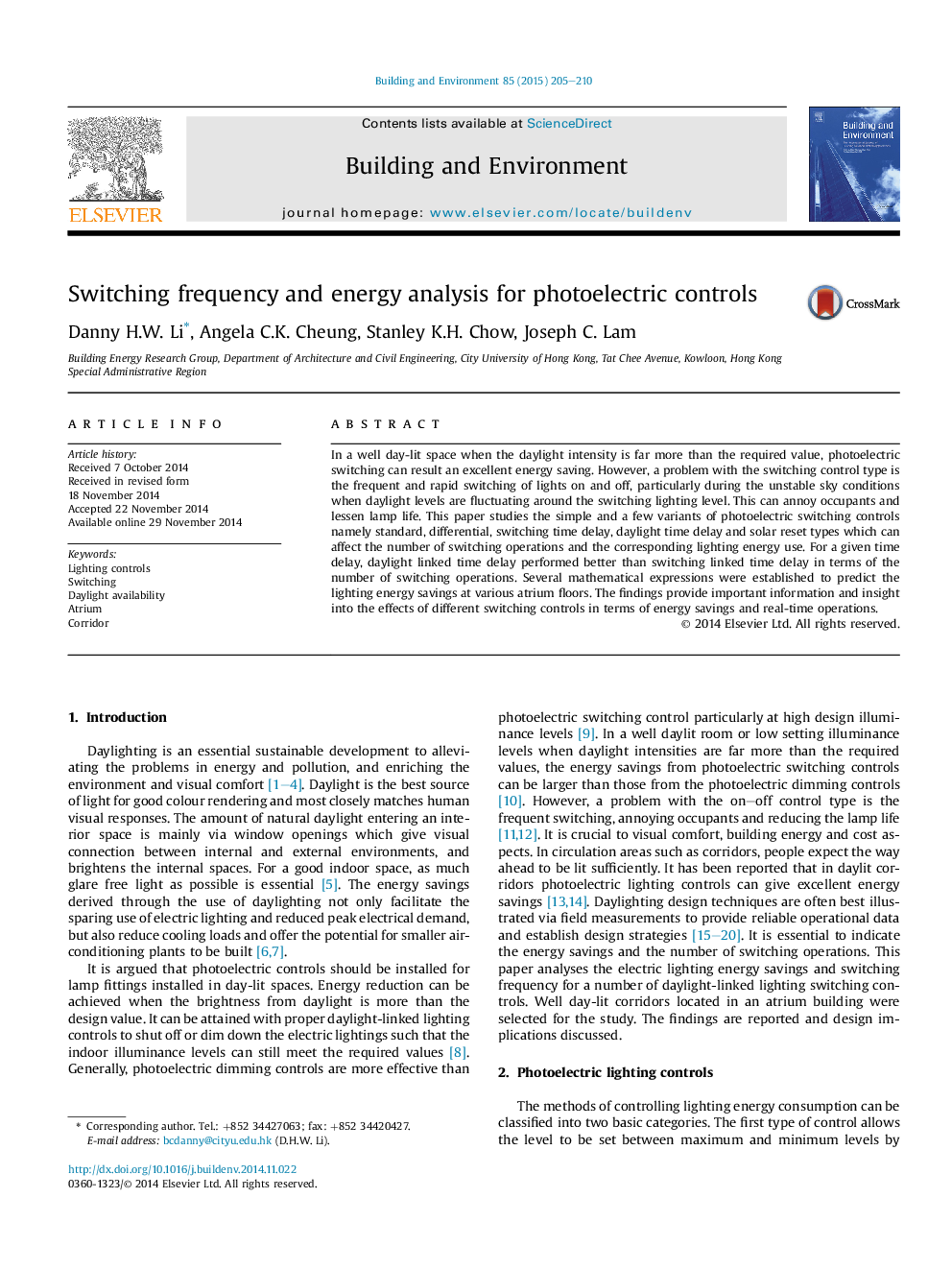| Article ID | Journal | Published Year | Pages | File Type |
|---|---|---|---|---|
| 247958 | Building and Environment | 2015 | 6 Pages |
•Switching frequency for various photoelectric switching controls is analysed.•The number of switching and the corresponding energy savings are simulated.•Daylight linked time delay gives less number of switching than switching time delay.•Simple equations to predict the lighting energy savings are established.
In a well day-lit space when the daylight intensity is far more than the required value, photoelectric switching can result an excellent energy saving. However, a problem with the switching control type is the frequent and rapid switching of lights on and off, particularly during the unstable sky conditions when daylight levels are fluctuating around the switching lighting level. This can annoy occupants and lessen lamp life. This paper studies the simple and a few variants of photoelectric switching controls namely standard, differential, switching time delay, daylight time delay and solar reset types which can affect the number of switching operations and the corresponding lighting energy use. For a given time delay, daylight linked time delay performed better than switching linked time delay in terms of the number of switching operations. Several mathematical expressions were established to predict the lighting energy savings at various atrium floors. The findings provide important information and insight into the effects of different switching controls in terms of energy savings and real-time operations.
